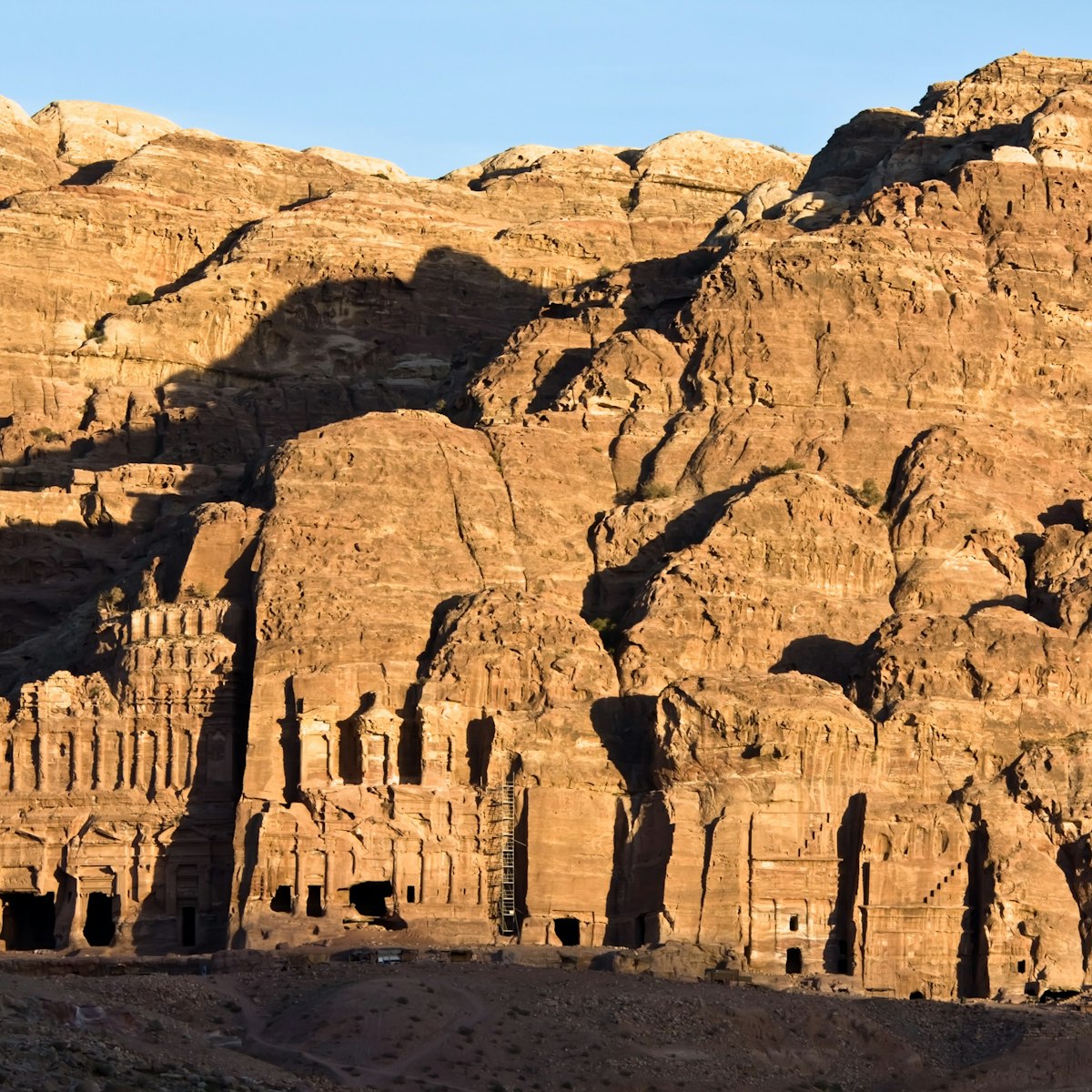A major Nabataean temple of the 1st century BCE, this structure was badly damaged by an earthquake not long after it was built, but it remained in use (albeit in different forms) until the late Byzantine period. A theatron (miniature theatre) stands in the centre. The temple was once 18m high, and the enclosure was 40m by 28m. The interior was originally covered with striking red-and-white stucco.
The first set of stairs was fronted by a monumental propylaeum (gateway) while the courtyard at the top of the first stairs marked the lower temenos, flanked by a triple colonnade. The upper level housed the temple’s sacred enclosure, with four huge columns (made from stone discs and clad in marble) at the entrance.
Archaeologists debate the function of this so-called temple, some suggesting that it may have been used by the Nabataeans as a royal audience hall. The Romans appear to have used it in later times as a civic centre.








